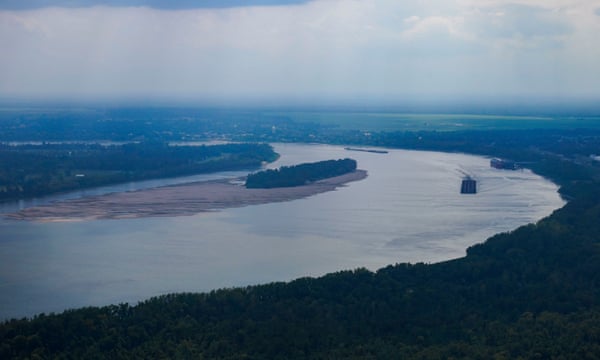"Informed AI News" is an publications aggregation platform, ensuring you only gain the most valuable information, to eliminate information asymmetry and break through the limits of information cocoons. Find out more >>
Global Rivers Face Rapid Decline Amid Climate Change
- summary
- score

Rivers dried up faster in 2023 than in three decades. This puts global water supply at risk. Over the past five years, river levels have been lower than average worldwide. Reservoirs are also low.
In 2023, more than half of global river catchment areas faced abnormal conditions. Most were in deficit. Severe drought and low river discharge affected large areas in North, Central, and South America. The Amazon and Mississippi rivers had record low water levels. In Asia and Oceania, the Ganges, Brahmaputra, and Mekong rivers also struggled.
Climate change is altering water distribution. It causes extreme floods and droughts. 2023 was the hottest year on record. Rivers ran low, and countries faced droughts. Yet, devastating floods hit various parts of the globe.
The World Meteorological Organization (WMO) linked these extremes to the transition from La Niña to El Niño in mid-2023. These are natural weather patterns. El Niño brings warmer sea-surface temperatures. La Niña brings cooler temperatures. Climate change is making these patterns more intense and unpredictable.
Flooding occurred in East Africa, New Zealand, and the Philippines. In the UK, Ireland, Finland, and Sweden, rivers had above-normal discharge.
WMO Secretary General Celeste Saulo said, "Water is the canary in the coalmine of climate change." Extreme rainfall, floods, and droughts are signals of distress. Melting ice and glaciers threaten long-term water security. Yet, urgent action is lacking.
Rising temperatures accelerate the hydrological cycle. It becomes more erratic. We face either too much or too little water. A warmer atmosphere holds more moisture, leading to heavy rainfall. Rapid evaporation and soil drying worsen droughts.
Currently, 3.6 billion people lack adequate water access for at least one month a year. This is expected to rise to over 5 billion by 2050. Glaciers lost more than 600 gigatonnes of water in 2023, the highest in 50 years. Western North America and the European Alps faced extreme melting. Switzerland's Alps lost about 10% of their volume in two years.
Saulo emphasized the need for better monitoring and data-sharing. We must manage what we measure. This report aims to improve cross-border collaboration and assessments. Urgent action is needed.
| Scores | Value | Explanation |
|---|---|---|
| Objectivity | 6 | Comprehensive reporting with in-depth analysis. |
| Social Impact | 6 | Extensive and in-depth social discussion. |
| Credibility | 6 | Verified independently by multiple sources. |
| Potential | 7 | Profound impact on social structures or policies. |
| Practicality | 4 | Highly practical, directly applicable. |
| Entertainment Value | 2 | Slightly monotonous with few entertaining elements. |